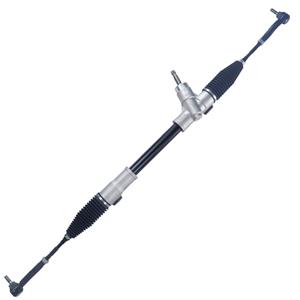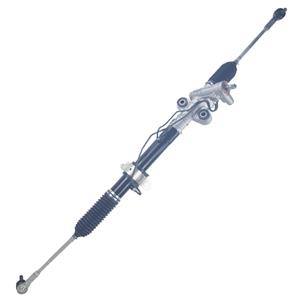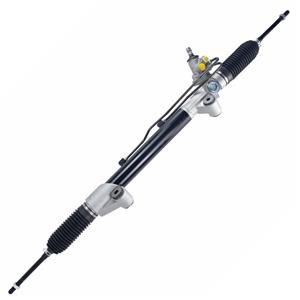Mechanical Structure of Manual Steering System Vs. Hydraulic Steering System
In automotive engineering, the steering system is a core component that affects driving control and vehicle safety. The main task of the steering system is to convert the driver's steering wheel rotation into the steering action of the wheels. Today, cars mainly use two types of steering systems: manual steering system and hydraulic steering system.
This article will explore the mechanical structure of the manual steering system and compare its mechanical structure differences with the hydraulic steering system in detail.
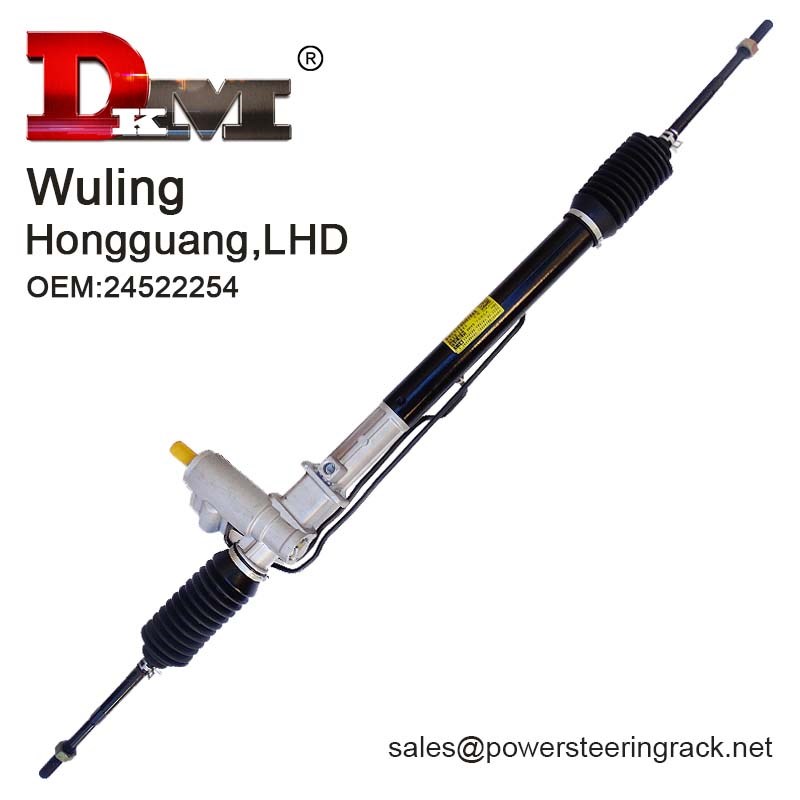
What Are the Mechanical Structures of the Manual Steering System?
The manual steering system, also known as the mechanical steering system, is the most traditional way of steering a car. It relies on the driver's power to act directly on the wheels through a mechanical device to complete the steering process. The following are the main mechanical parts of the manual steering system:
Steering wheel and steering shaft:
The steering wheel is the interface for the driver to control the vehicle. By turning the steering wheel, the force applied by the driver is transmitted to the steering shaft. The steering shaft connects the steering wheel to the gear system and is the first step in power transmission.
Rack-and-Pinion Mechanism:
In manual steering systems, the most common mechanical structure is the rack-and-pinion mechanism. The steering wheel is connected to a pinion (gear shaft) through the steering shaft, which meshes with a parallel rack. When the driver turns the steering wheel, the rotation of the pinion drives the rack to move horizontally, thus converting the rotary motion into linear motion. This movement turns the wheel left or right.
Steering linkage and knuckle arm:
The movement of the rack is transmitted to the wheel through the steering linkage and knuckle arm. The steering linkage is connected to the wheel, and the knuckle arm effectively transmits the force to the steering knuckle of the wheel through the support bearing, thereby controlling the rotation angle of the wheel.
Steering bearing and bracket:
In order to reduce friction during the rotation process, the steering shaft and rack are installed in bearings and brackets. These components ensure the smooth operation and durability of the steering system.
Shock absorber:
In some manual steering systems, shock absorbers such as buffer springs or rubber shock absorbers are also added to the steering system to increase driving comfort and reduce the transmission of road vibrations.
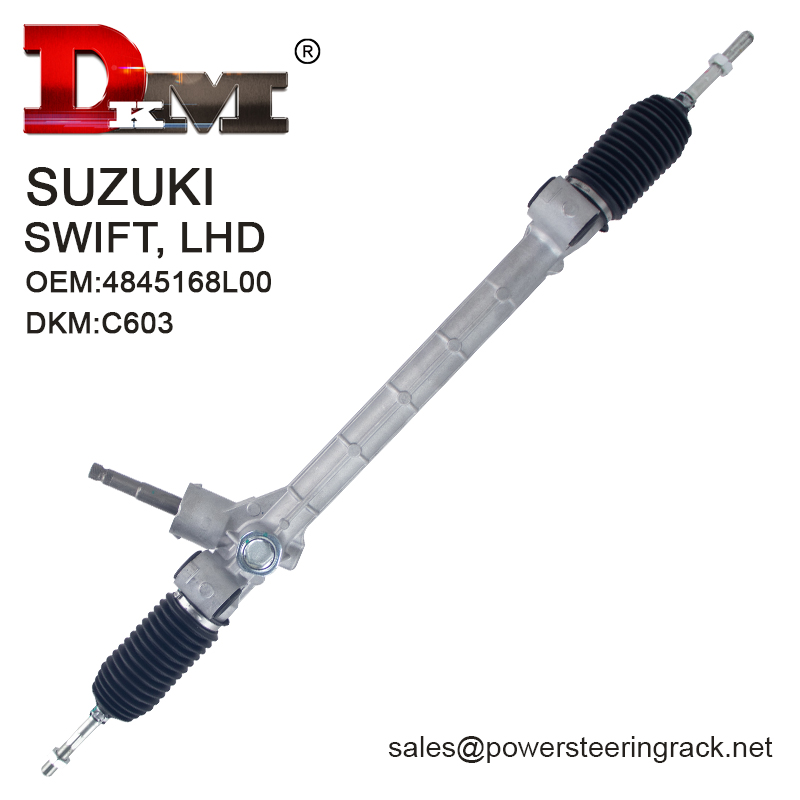
What Are the Mechanical Structures of the Hydraulic Steering System?
The hydraulic steering system is based on the manual steering system, and a hydraulic power assist device is added to reduce the difficulty of the driver's operation. The following are the main mechanical structures of the hydraulic steering system:
Hydraulic pump:
The most critical component in the hydraulic steering system is the hydraulic pump. The hydraulic pump is usually driven by the engine and connected by a belt. When the engine is running, the hydraulic pump starts to work and generates the flow of hydraulic oil.
Hydraulic cylinder:
The hydraulic cylinder is the power-assisting component in the hydraulic steering system. It is usually installed on one side of the rack. The hydraulic oil enters one end of the cylinder under the action of the hydraulic pump and pushes the piston to move, thereby providing additional thrust for the steering rack and reducing the steering burden of the driver.
Hydraulic pipeline:
The hydraulic oil is transported from the hydraulic pump to the cylinder through the hydraulic pipeline. The hydraulic pipeline is designed as a high-pressure pipeline to ensure the stable flow of hydraulic oil in the system.
Hydraulic valve:
The hydraulic system also includes various valves, such as pressure regulating valves and one-way valves, which are used to control the flow and pressure of hydraulic oil. These valves can adjust the pressure in the cylinder according to the driver's operation, thereby adjusting the size of the power assist.
Oil storage tank:
There is also an oil storage tank in the hydraulic system to store excess hydraulic oil and replenish the hydraulic oil in the system. The oil tank ensures the working stability of the hydraulic system and avoids the failure of the steering power due to insufficient hydraulic oil.
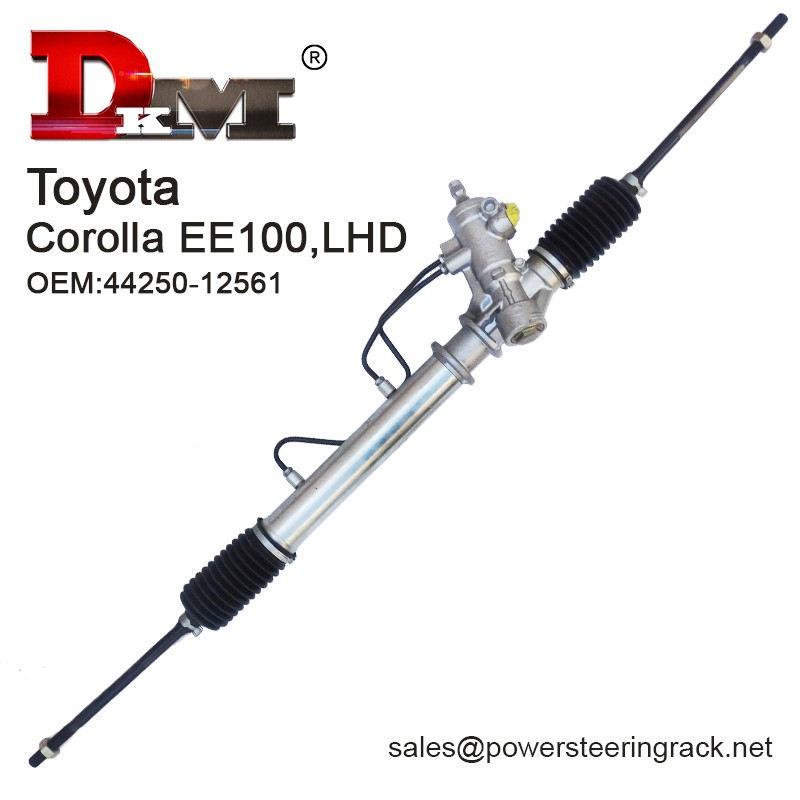
Mechanical Structure of Manual Steering System Vs. Hydraulic Steering System: What Is the Difference?
The mechanical structure of manual steering system and hydraulic steering system has obvious differences in design concept, operation principle and user experience. The following are the main differences in their mechanical structure:
Power-assisting method:
● The manual steering system completely relies on the driver's power for steering, and the mechanical structure is relatively simple, mainly relying on the rack and pinion mechanism to achieve steering. Without an external power-assisting device, the driver needs to apply a large force to turn the steering wheel.
● The hydraulic steering system adds a hydraulic power-assisting device on the basis of the manual steering system. The hydraulic pump provides additional power to help the driver turn the steering wheel more easily, even when driving at low speed or parking.
Mechanical complexity:
● The mechanical structure of the manual steering system is relatively simple, mainly composed of components such as steering wheel, steering shaft, rack and pinion mechanism, steering linkage and knuckle arm. This makes the manual steering system more durable and has lower maintenance costs.
● The hydraulic steering system has a more complex mechanical structure due to the addition of complex components such as hydraulic pumps, hydraulic cylinders, and hydraulic pipelines. This complexity brings better steering assistance, but also increases the risk of system failure and maintenance costs.
Operation experience:
● The manual steering system has a more direct operating experience. The driver can clearly feel the feedback from the road. A larger force is required when steering, especially at low speed or parking, when the steering operation is more laborious.
● The hydraulic steering system significantly reduces the driver's operating burden, the steering wheel is easy to turn, and the operation is more comfortable. However, the existence of the hydraulic system makes the driver's feedback on the road relatively weak.
Energy consumption:
● The manual steering system has no additional energy consumption and relies entirely on the driver's power to operate, so there is no additional fuel consumption problem.
● The hydraulic steering system requires the engine to drive the hydraulic pump to work, which will cause a certain degree of energy consumption, thereby affecting the vehicle's fuel efficiency. Especially in the case of frequent steering, the energy consumption of the hydraulic steering system is more obvious.
System weight:
● The manual steering system has a simple mechanical structure and light weight, which helps to reduce the overall weight of the vehicle, especially for small cars and economy cars.
● The hydraulic steering system adds components such as hydraulic pumps, hydraulic pipes and cylinders, which increases the overall weight of the system and may have a certain impact on the front weight distribution of the vehicle.
Reliability and durability:
● The manual steering system has high overall reliability and durability due to its simple mechanical structure. The components in the system are not easily damaged and can maintain good performance for a long time even under harsh driving conditions.
● Although the hydraulic steering system provides a better steering experience, due to its complexity, components such as pipes, pumps and valves in the hydraulic system are susceptible to wear and leakage and may require more frequent maintenance and servicing.

Conclusion
The differences in mechanical structure between manual steering systems and hydraulic steering systems are mainly reflected in power assist mode, complexity, operating experience, energy consumption, system weight, reliability and durability. The manual steering system has a simple structure and low cost, which is suitable for vehicles that pursue economy and reliability; while the hydraulic steering system significantly improves the driver's operating experience by adding a hydraulic power assist device, especially at low speed or parking, making steering operations easier.
However, this comfort and convenience comes at the cost of increased system complexity and energy consumption. Therefore, when choosing a steering system, manufacturers and consumers need to weigh driving experience against system cost, maintenance difficulty and other factors. In general, manual steering systems and hydraulic steering systems have their own advantages and disadvantages and are suitable for different vehicle types and usage scenarios.


